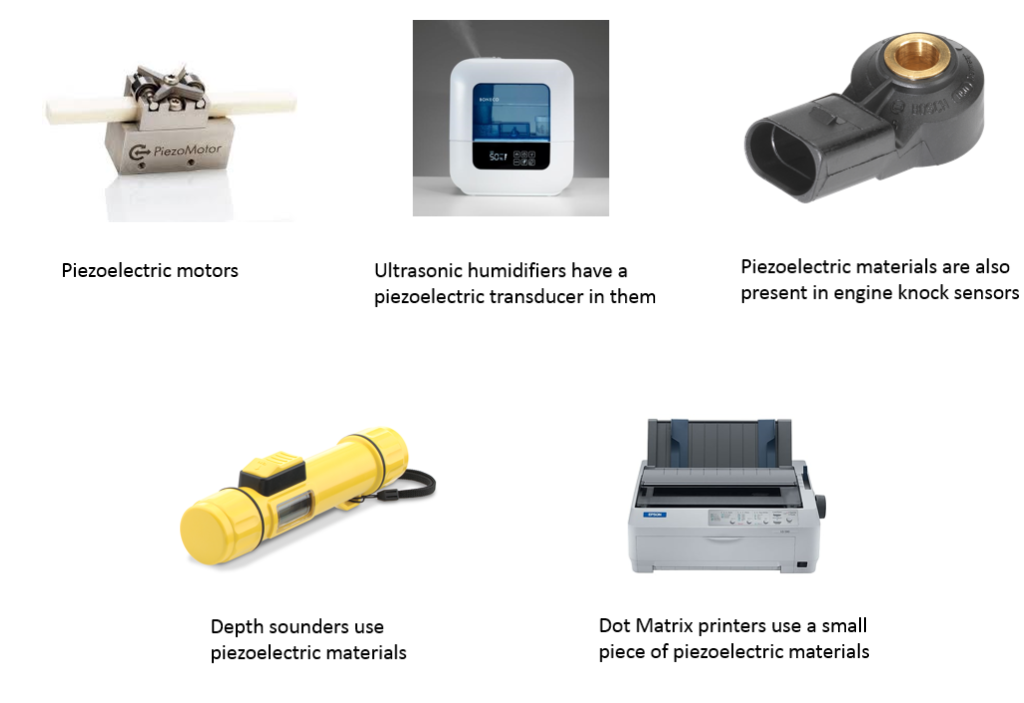What is Piezoelectricity?
Piezoelectricity, or the piezoelectric effect, is the electric charge that accumulates in certain solid materials in response to applied mechanical stress. This effect is reversible: applying an electric field to a piezoelectric material will induce mechanical strain. The term “piezoelectric” originates from the Greek word “piezo,” meaning “to squeeze or press.”
Piezoelectric materials fall into two main categories: ceramics and crystals. Naturally occurring examples include quartz, cane sugar, and Rochelle salt, while man-made materials encompass lead zirconate titanate, barium titanate, and lithium niobate.
The demand for piezoelectric materials is steadily increasing, driving growth in the piezoelectric industry. Governments, corporations, and entrepreneurs are continually exploring and innovating with piezoelectric ceramics across diverse sectors.

Applications of Piezoelectric Ceramics
The applications of piezoelectric ceramics are endless. The unique ability of piezoelectric ceramics to convert mechanical stress into electrical charge, and vice-versa, has led to a remarkably diverse range of applications across numerous industries. From everyday devices to cutting-edge technologies, piezoelectric ceramics are playing a crucial role in shaping our world. The following sections explore some key areas where these materials are making a significant impact:
- Sensing and Measurement:
Piezoelectric sensors are highly sensitive and accurate, making them ideal for a variety of measurement applications. They can detect minute changes in pressure, force, acceleration, and vibration. This sensitivity stems from the direct relationship between mechanical stress and electrical charge generation in the material. Some prominent examples include:
- Pressure Sensors: Used in automotive airbag systems, medical devices for blood pressure monitoring, and industrial control systems to measure and regulate pressure in pipelines and tanks. Their robustness and ability to withstand harsh environments make them suitable for these demanding applications.
- Accelerometers: Found in smartphones, gaming consoles, and automotive stability control systems, accelerometers measure acceleration and deceleration. Piezoelectric accelerometers are particularly useful in high-vibration environments due to their high-frequency response.
- Force Sensors: Employed in robotics, manufacturing, and weighing scales to measure the force applied to an object. Their accuracy and linearity make them essential for precise force control and measurement.
- Vibration Sensors: Used for structural health monitoring in bridges, buildings, and aircraft. They can detect subtle vibrations that may indicate damage or impending failure, allowing for proactive maintenance and preventing catastrophic events. They also find applications in machinery monitoring to detect imbalances or other anomalies.
- Ultrasonic Transducers: These devices generate and detect ultrasonic waves, which have numerous applications in medical imaging (ultrasound), non-destructive testing (flaw detection in materials), and underwater sonar. Piezoelectric ceramics are crucial for these applications due to their efficient conversion of electrical energy to acoustic energy and vice-versa.
- Actuation and Control:
Beyond sensing, piezoelectric ceramics can also act as actuators, converting electrical energy into mechanical motion. This capability enables precise control and manipulation in various applications:
- Micropositioning Systems: Used in precision engineering, microscopy, and laser alignment, piezoelectric actuators can provide extremely fine and controlled movements, often at the nanometer scale. Their high stiffness and fast response times are critical for these applications.
- Inkjet Printers: Piezoelectric actuators are used to eject ink droplets in inkjet printers. The precise control over the actuation allows for high-resolution printing and efficient ink usage.
- Ultrasonic Motors: These motors utilize the vibrations generated by piezoelectric elements to produce rotational motion. They are compact, efficient, and offer high torque at low speeds, making them suitable for applications like camera autofocus systems and miniature robotics.
- Valves and Pumps: Piezoelectric actuators can be used to control the flow of fluids in microfluidic devices and miniature pumps. Their small size and precise control make them ideal for applications in medical diagnostics and drug delivery systems.
- Haptic Feedback: Used in touchscreens and gaming controllers to provide tactile feedback to the user. Piezoelectric actuators can generate vibrations and forces that simulate the feeling of textures and interactions.
- Energy Harvesting:
Piezoelectric materials offer a promising avenue for energy harvesting, converting ambient mechanical vibrations into electrical energy. While still a developing field, it has the potential to power small electronic devices and sensors:
- Vibrational Energy Harvesting: Piezoelectric devices can be integrated into structures or machinery to capture energy from vibrations that would otherwise be wasted. This energy can then be used to power sensors, wireless communication devices, or even charge batteries.
- Roadway Energy Harvesting: As mentioned earlier, piezoelectric devices can be embedded in roads to generate electricity from the vibrations caused by passing vehicles. While still in the experimental stage, this technology could potentially contribute to sustainable energy generation.
- Wearable Energy Harvesting: Piezoelectric materials can be incorporated into clothing or accessories to harvest energy from body movements. This energy could be used to power wearable sensors or other small electronic devices.
- Other Applications:
Beyond the major areas mentioned above, piezoelectric ceramics find applications in a wide range of other fields:
- Medical Ultrasound: Essential for diagnostic imaging, allowing doctors to visualize internal organs and tissues.
- Sonar Systems: Used in naval applications for underwater navigation and detection.
- Ignition Systems: Used in lighters and gas stoves to generate a spark for ignition.
- RF Filters and Resonators: Used in telecommunications to filter and select specific frequencies.
The applications of piezoelectric ceramics continue to evolve as researchers explore new materials and designs. Their versatility, sensitivity, and ability to convert between mechanical and electrical energy make them indispensable components in a wide array of technologies, and their importance is only expected to grow in the future.
If none of these products match your requirements, click here to learn more about working with our engineers to build a custom piezo component.
